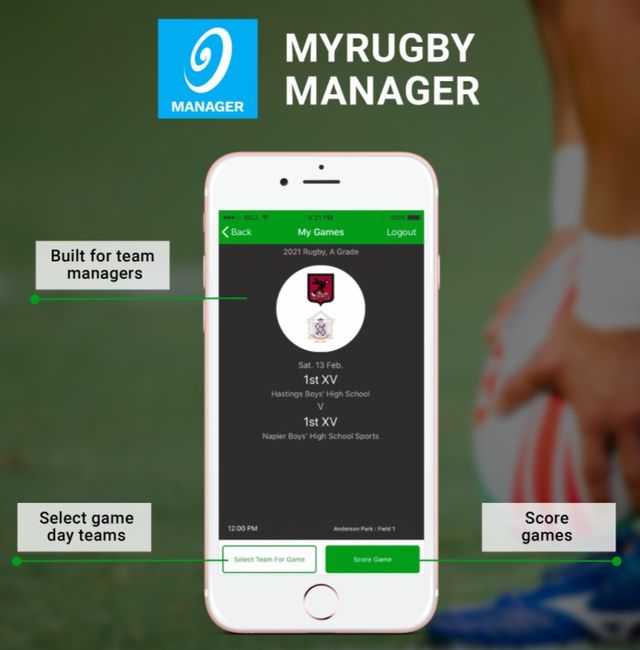Performing Arts / Singing
Singing related newsitems
-
-
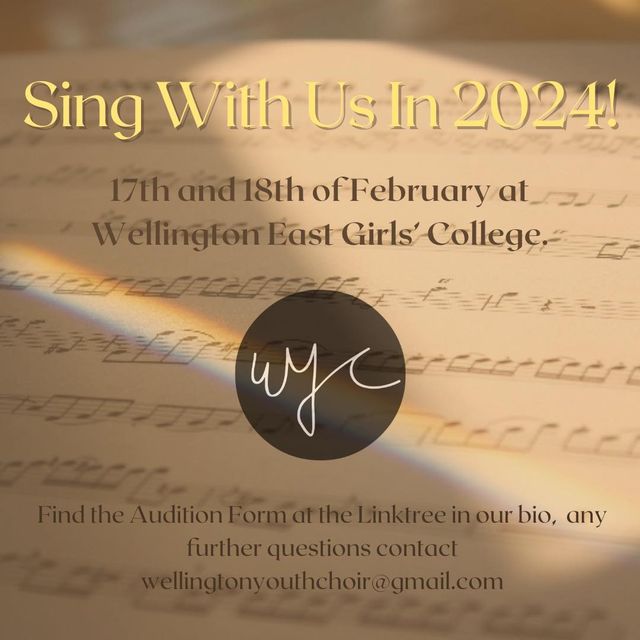
WYC Auditions 2024
- Wellington Youth Choir
- Kia Ora everyone! We’re very excited to announce that 2024 Auditions for the Wellington Youth Choir are happening soon! The … More
- Accepted from WYC news by feedreader
- Automatically tagged as:
- singing
-
-
-
Green green room
- Urban Dream Brokerage
- A pilot scheme for a resource library for the independent theatre community in Wellington. This project has been brought to reality by Trick of the Light, Barbarian Productions, Fiē Neo, Marcus McShane & Anne-Lisa Noordover.
- Submitted by anonbf694b50-5a5e-4b82-aa93-2ccaa3141afc
- Tagged as:
- theatre
Courtenay Place, Mount Victoria, Wellington, Wellington City, Wellington, 6011, New Zealand (OpenStreetMap)
-
-
-

Songs and colours of water and earth: Mahler, Schoenberg, and Orchestra Wellington
- Wellington City Libraries
- Continuing the series of posts that explore links between the WCL music collection and Orchestra Wellington’s 2023 Inner Visions season, today’s… Continue reading Songs and colours of water and earth: Mahler, Schoenberg, and Orchestra Wellington →
- Accepted from WCL Blog feed by tonytw1
- Tagged as:
- music
- singing
-
-
-
Big Sing Success
- Onslow College
- Congratulations to our two choirs who participated in the Big Sing on Thursday 8 June. Our small choir, Ngā Waipahihi won two awards the Adjudicator’s choice and best performance of a piece in te reo (which is a new award for 2023) Great mahi was shown by all performers.
- Submitted by tonytw1
- Tagged as:
- singing
Onslow College, Burma Road, Broadmeadows, Wellington, Wellington City, Wellington, 6037, New Zealand (OpenStreetMap)
-
-
-

Māorioke with the Māori Wardens of Te Whanganui-a-Tara
- Wellington City Libraries
- Kei te whakaari ngā kamu waiata o Ngā Wātene Māori o Te Whanganui a Tara. The Māori Wardens of Te Whanganui-a-Tara extend an open invitation to the city to join for community waiata sing along throughout June with ‘Māorioke with the Māori Wardens’, a series of karaoke style public singalongs in the heart of our city on Courtenay Place. As our nights draw in and our streets get darker, the Māori Wardens will provide a shining beacon using a projected public karaoke screen, complete with waiata and party tunes to share. To be held over four nights through June, led by the esteemed Suzanne Tamaki and joined by Rayleen Hirini and Maraea Rihari.
- Accepted from WCL Blog feed by tonytw1
- Tagged as:
- events
- singing
Courtenay Place, Te Aro, Wellington, Wellington City, Wellington, 6011, New Zealand (OpenStreetMap)
-
-
-
Whare Tapere
- Urban Dream Brokerage
- Kia kawea tātou e te rēhia Let us be taken by joy and entertainment Whare Tapere are iwi-community 'houses' of storytelling, dance, music and more. Places where community could meet together and enjoy themselves. A space for Māori and Pasifika creatives to meet, share and create collectively, unveiling our cities pūrākau.
- Submitted by tonytw1
- Automatically tagged as:
- art
- singing
Taranaki Street, Te Aro, Wellington, Wellington City, Wellington, 6040, New Zealand (OpenStreetMap)
-
-
-
Doc Edge
- Urban Dream Brokerage
- Prepare to be transported into a realm where reality transcends imagination, where storytelling takes an awe-inspiring leap into the future. We are thrilled to extend an exclusive invitation to you and your family to embark on an unforgettable journey at the Doc Edge XR Exhibition, New Zealand's most captivating showcase of Augmented Reality (AR), Virtual Reality (VR), breath taking installations, and mesmerizing digital immersive stories. Get ready to witness the birth of a new era in storytelling!
- Submitted by tonytw1
- Tagged as:
- exhibitions
-
-
-
Mārioke with the Māori Wardens
- Urban Dream Brokerage
- Kei te whakaari ngā kamu waiata o Ngā Wātene Māori o Te Whanganui-a-Tara. The Māori Wardens of Te Whanganui-a-Tara extend an open invitation to the city to join for community waiata sing along throughout June, let’s collectively warm our souls this winter!
- Submitted by tonytw1
- Automatically tagged as:
- art
- singing
-
-
-
Party of Rare and Unearthly Treasures — Urban Dream Brokerage
- Urban Dream Brokerage
- Erika Grant proudly presents a 6 week artist residency for ‘Party of Unearthly & Rare Treasures’. Proudly supported by Urban Dream Brokerage, and Wellington City Council, working together again on another incredible commissioned public art activation in 2023! Erika Grant, based in Te Whanganui-a-Tara, kicks off her three part journey throughout May, culminating with two major public art events in June, with the main ‘Party of Unearthly & Rare Treasures’ celebration taking place on June 10th.
- Submitted by tonytw1
- Automatically tagged as:
- art
- singing
-
-
-
Soft Serve Social — Urban Dream Brokerage
- Urban Dream Brokerage
- A collective desire for joy, safety and empowerment has created a need for Playescape - an urban swing set. What are the ways we can feel present, calm and connected when we are alone in public space at any time of day? Playescape will be a valuable experiment in re-balancing personal/emotional wellbeing in the urban environment of Te Aro. The act of sitting alone on a bench in the street is something that everyone should feel safe to do. However, in reality that isn’t always the case. Can we change this?
- Submitted by tonytw1
- Automatically tagged as:
- art
- singing
Glover Park, Te Aro, Wellington, Wellington City, Wellington, New Zealand (OpenStreetMap)
-
-
-
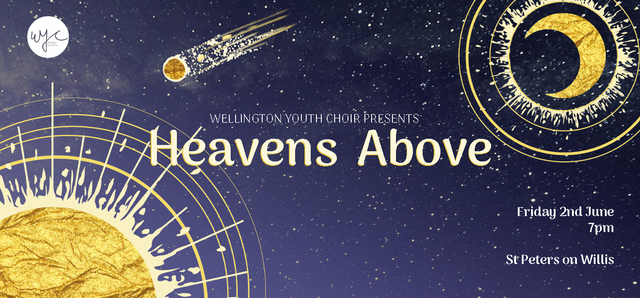
WYC Presents: Heavens Above
- Wellington Youth Choir
- Friday 2nd June 2023 | 7pm | St Peter’s on Willis, Wellington The Wellington Youth Choir is proud to present … More
- Accepted from WYC news by feedreader
- Tagged as:
- gigs
-
-
-
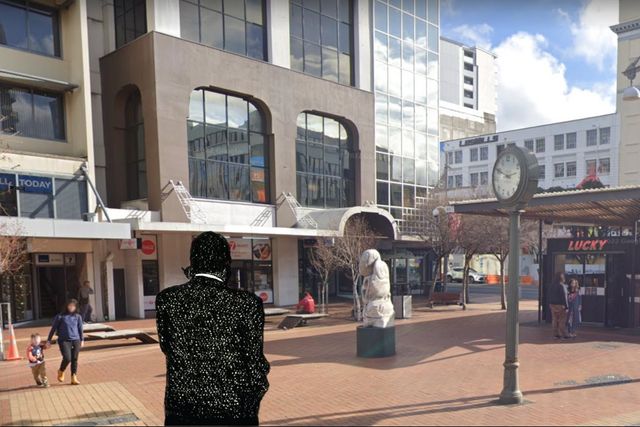
Call/Waiting
- Urban Dream Brokerage
- Call/Waiting is an app-enabled interactive experience which invites you, the participant, to dial into a curious series of voicemails while you make your way around Pōneke. It’s part pick-a-path novel, part audio tour. A brand new work by Olivia Mahood and Poppy Serano (O+P Works), made in collaboration with Pickpath. Call/Waiting is a 30 minute experience. It begins when you access the app via your Apple or Android smartphone. You control your experience and how long you spend in it.
- Submitted by tonytw1
- Automatically tagged as:
- art
- singing
-
-
-
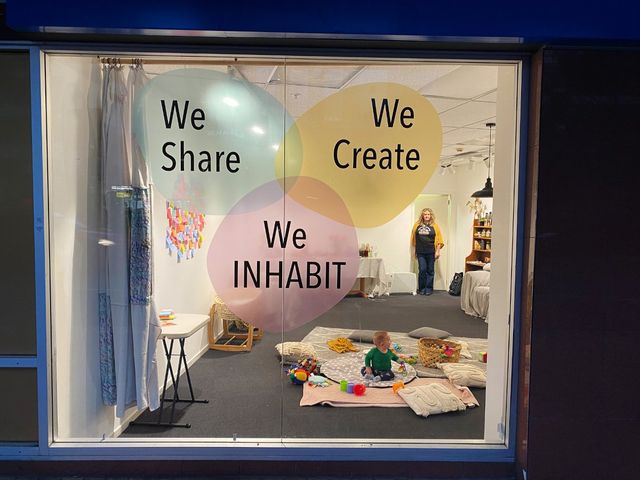
The artist as many other things first
- Urban Dream Brokerage
- Holly McEntegart in conversation with Anne Noble, facilitated by Mark Amery <figure class=" sqs-block-image-figure intrinsic " > Image: Anne Noble Merging her work as an artist, mother and full spectrum doula, Holli McEntegart recently brought something remarkably different to the bustle of Wellington’s Courtenay Place, in an exploration of art as a social practice. Providing a warm, calm space for participation, Inhabit brought together mothers and their infants to examine how community, cultural and whānau postpartum care has changed in Aotearoa, sharing experiences in real-time and as oral history. A private issue was brought into a public realm. Rethinking the artist’s role in society, McEntegart was supported by artist Anne Noble in a project commissioned by Letting Space for vacant space activators Urban Dream Brokerage. McEntegart now has plans to bring the project to Auckland. Here are Holli and Anne in conversation. Mark Amery Anne Noble: Letting Space and Urban Dream Brokerage have made a really remarkable contribution to the Wellington art scene. Letting Space positioned itself as an entity that sits outside the conventional domain of the gallery, where the artist is mostly defined e as a producer of objects and artefacts. They offered an experimental space and an invitation to artists to expand the ecology of contemporary art and provide support for them to provide a new kind of experience for communities and publics to engage with contemporary art I see Inhabit as a perfect example of the kind of project that Letting Space and Urban Dream Brokerage were established to nurture, enable and support. When I first thought about your ambition for Inhabit: to marry both your practices as an artist and a full spectrum doula, one of my first questions was about the expanded role of the artist in a social practice. How is your work first and foremost art while being shaped by other practices and concerns? What came to mind was a book [^1] I’ve had on my bookshelf, which has on its cover The Artist As followed by a list: that includes such descriptors of the artist as .. producer; the artist as… archivist; the artist as… ethnographer; the artist as… catalyst; the artist as… orchestrator; the artist as… poet; the artist as… curator. And it ends with this really beautiful phrase in capital letters: AND MANY OTHER THINGS FIRST. This points to the fundamental premise of your art practice - driven and formed by another whole domain of expertise, professional practice, experience and activist concerns. <figure class=" sqs-block-image-figure intrinsic " > Image: Anne Noble | Infant massage with Jo Chambers. From left: Megan Rodgers and Jasper, Jo Chambers from Blissful Bubs You define yourself as a social practice artist but you also practice as a full spectrum doula. How did you arrive at the idea of merging your practice as an artist with your life as a mother, your interest in the post-partum experience and your activism in this space? Holli McEntegart: You and I talked a lot about the artist as a conduit; or as activator. As a young artist I was always really interested in capturing images of moments that had complicated stories behind them. I realised that my interest was often more in the story; how we got to this point; the full stop. The work was always, for me, in the negotiation of getting to that image - with the image itself feeling lacklustre in comparison to that journey. Then when I moved to Pittsburgh to complete my Masters I found that there was a greater focus on social practice as a role for the artmaker. The driving need for me has always been to build relationships, and therefore community. So when I was taking photographs I would spend months getting to know people, navigating the permission, not just to be there, but to be accepted; to belong. I’ve joined every group under the sun! A loon (an aquatic bird) counting group in Maine, a porcelain painting group in Mt Albert, a bluegrass group, banjo club and a barbershop quartet in Pittsburgh, and a cake decorating group in Otara, to name a few. But I didn't feel like I had the right to be there unless I was really an accepted part of the community. That came to a head for me in Pittsburgh when I joined a semi-gated spiritualist community called Lily Dale, and began making work out of the readings they were doing for me. I would spend eight months with them before I could make that work. By the time I was living in New York there were many grants, residencies and galleries supporting a socially engaged framework of art making. My eyes were opened to the fact that this community exchange and the energy I was investing into relationship building was not only valid, it was the work.That really gave me permission to move past just documenting my work with photographs or videos and writing and to pull the focus back to the process, the making and the relationship tending. Research is a huge part of my process, whatever I’m working on I’m always off down a research tunnel. So, when I got pregnant in New York with my first child Arlo I went on a huge journey to understand pregnancy, birth and everything that was happening to my body. I discovered that in New York City, the maternal mortality rate in pregnancy, birth and early postpartum is astoundingly high, and that black women are 12 times more likely to die in childbirth than white women. OB’s are often pushing for a lot of unnecessary interventions within the hospital system and midwives are not as commonly used, though that is changing. I come from a family of home birthers in New Zealand, it was normalised and seemed like the obvious place for me to birth, but only around 1.5% of people give birth at home in the US, so it's quite a radical thing to do in that context. I was so lucky that I had a neighbour and friend who was training to be a midwife and was working as a birth doula. Through her I discovered this group of folks called doulas. I started learning about the role they play in birth work, about reproductive and birth justice advocacy, and about everything I was going to need to know to birth my baby at home while being supported by a midwife and doula team. <figure class=" sqs-block-image-figure intrinsic " > Image: Anne Noble New York City is so compact, we had a tiny apartment and I had a home studio. My son, Arlo, was born underwater, in a birth pool on my studio floor. At that point I had been working for some time within these spiritualist communities. I had been really delving into why people were seeking healing in these communities and what it meant to be constantly practising these healing rituals. Birthing my son in my studio was like an epiphany, I was on a healing journey myself and this was a part of the work. Birth was incredibly healing for me at that point in my life and then, like many people, postpartum was a completely different beast. Like most people experiencing giving birth far from their home and family, I just felt an intense lack of support from the world. And with that a deep loneliness. I was so homesick. My parents came to visit for two weeks which was incredible, but it went so fast. A few good friends showed up as best they could but I was living and working as an artist in New York, I didn’t know anyone with babies or even young kids. People are busy - for everyone else, life goes on. It’s the postpartum person that is stuck in stillness, but constantly working. It was a totally different world. You get the sense that everybody shows up for birth, everyones interested, you learn so much about pregnancy and childbirth, tracking the changes in your body all the way through to this kind of event, and then everyone leaves, and you’re left in charge of a human. It’s wild, uncharted territory and no-one’s told you that much, or what they have told you is irrelevant, biassed, outdated and sometimes even harmful. I longed for my family, mostly for my mum. I found myself floating out to sea, and there was a realisation that no one was going to rescue me - I had to rescue myself. And to do that I needed to dive even deeper into what was happening to me, go down that research tunnel again and find out what support there was in the world and how I could heal. That led to me doing Seen, a postpartum doula mentorship programme with Birdsong Brooklyn, and learning constantly - four or five months too late - what could have rescued me before I needed rescuing! It was eye opening and there was a lot of deep grief about the care I had missed out on, and the ways I could have been supported. I was diving deeply into the profoundness of becoming a mother and the reality of how much is lacking in the world in supporting new parents. I just fell in love with this idea that we could be healing collectively if we just looked after each other better and shared our knowledge. I built my community from that in New York in that first year of parenting. At that point I had been working for three years as the studio manager for an incredible artist, Janine Antoni, who is also a parent and understands that mothering work. It was a huge question for me: how do I keep working in the world as an artist, be able to show up as a mother and earn enough money to live? How do I juggle all of this and stay tethered to myself? I gave birth to my son when I was 38 and I was being called a geriatric mother by the medical system. It scared me. I wanted to breathe in my baby, just inhale him and not miss a second. But how do I do that and keep up my practice? Well… I just gave birth to my son in my studio…. It was these layers of realisation: this labour is the work. I have to reframe my life so that this labour of the home, the labour of care, of mothering, is seen and valued. So I left my job in the studio with Janine and went straight into postpartum doula training. I needed to be immersed in the community in the same way I had been with the spiritualists or the cake decorators or the bird counters in Maine. <figure class=" sqs-block-image-figure intrinsic " > Image: Holli McEntegart | Multiples Feeding Support Group. From left: Jessie Lee Broadbent, anon Anne: You have talked about your journey as a photographer engaging with communities, and how the outcome can be separated from those experiences that feel like part of the work. That is n true for many documentary photography projects.You’ve also described beautifully your dissatisfaction with being both outside a subject and yet needing to be right in the heart of it. The notion of a social practice artist is less common in New Zealand than in the US. It has currency in art schools, but my instinct when we first met and talked was that you have a really highly evolved practice in which you prioritise your relationship as an artist to the post-partum communities you engage with Your work begins with you your life as a mother and your practice as a doula being the site of public art activism, of making the post-partum world experience shared and visible. How have you then addressed the visibility of this as an artwork? You only need to look at the project website to see the level of community engagement and the number of people you have drawn into this space. It’s really significant. Those workshops - people flocked to them. But to make it public, visible to participants and to audiences how does that work? Holli: What comes first for me is the relationship, being a good community member and trust. I come at relationship building and getting people involved with their whole heart; with a genuine interest and respect. I have to have something at risk as well. Inhabit was a year in the making, but the day we opened, with a multiples lactation support workshop. We had six twin mums and probably six assistants or helpers, including grandmas, friends, lactation and doula support. That's 12 babies plus Indigo [Holli’s own baby]. Over 24 bodies breathing life into the space. That was the moment that the work became art; that it became an artwork. It was activated by the community of people in the room and their energy. Up until then there’s a lot of risk on my part because I don’t know who is going to show up and what they will bring on the day. The work is filled with intention but it has to meet people where they are and vice versa, and for that reason, it’s never the same, it evolves and unfolds and, much like mothering, I must surrender to it. I think I’m comfortable leaning into the unknown. Within a socially engaged practice you really don’t know how your participants or your audience (the public) are going to enter the work. I consider the folks facilitating workshops my co-creators. There were six months of emailing and zoom conversations about what I was making with that final group of people, so many conversations about what the community needed. And then there was a point when they came to me with a plan to set up this specific workshop for multiples families. They were asking for my permission, and I was overjoyed because, it was at that point that they took ownership and really began to have agency within the work. That was the moment when the community was activated, they started creating what they needed under the umbrella that I offered - this community activation was where the social practice aspect of the work really came into play. <figure class=" sqs-block-image-figure intrinsic " > Image: Milan Maric | Combined yoga and Infant massage workshop with Emma Chen Flitcroft and Jo Chambers I was coming to Wellington, into a community I’m not from, so I’m constantly asking myself, how do I leave this space better than when I got here? Within social practice I think there is a very real responsibility to care for the community you're working in and to make sure there are ongoing care agreements in that community. Everyone that provided a workshop for Inhabit offers free or sliding scale services that could continue to be accessed after Inhabit closed for example. Anne: That’s a beautiful description of the artist as catalyst. I’m very fond of the notion that when an artist plays those roles, the artist in a conventional sense disappears to become a generating and catalysing force Holli: I’m interested in the way my role shifted from facilitator to participant, or mother , or host. Hourly that changed. Originally I thought I would be facilitating some workshops but I didn't end up doing that because so many people wanted to facilitate their own. At the beginning of each workshop I would introduce the project and really ground it back into the context of an artwork, to remind people they were participating in something both bigger than them, but also inherently generated by them, and then I would participate alongside them. I was never an observer, I was a participant. I think it’s really important I have the ability to be part of what’s happening as opposed to being an outsider. Learning, participating and being vulnerable. That vulnerability permissions other people in the space to also be vulnerable. It’s not like, as you’re describing Anne, that ‘‘you’re the artist and you’re over there’ on a pedestal. The process is about me sinking back into the work. It’s a dance between making sure people feel like they are being held and acknowledged and the space is being tended to in the correct way, but not dominating it. <figure class=" sqs-block-image-figure intrinsic " > Image: Anne Noble Anne: As a public artwork, positioned in Courtenay Place, it was a really beautiful intervention with really subtle signage and this glowing light masked by a wall of handmade stitched together nappies! It offered a surprising encounter that was intriguingly signposted and people were welcomed to just stop and to consider what it might be - as a public art project. Sometimes I was amazed at the number of people participating and how the work created an opportunity for a community to assemble. How did you introduce participants to the process of being part of something for them but also part of something larger? Of being participants and collaborators in Inhabit as an artwork. Holli: That was definitely one of my biggest challenges. There were a couple of things I did practically. Even before Inhabit opened I worked very hard to centre the project in the community with this drawing project that involved - six Love Note posters that were plastered repetitively around the city in the two weeks leading up to our opening. I was documenting them in situ and sending images of them to people when they were signing up for the workshops as well as using them in social media. So there was a centring of it as an art project before they arrived. Most people had seen these drawings and then saw the wall of Love Notes growing on the wall when they came into the space. I introduced that as a collaborative drawing project and really impressed the importance of adding everyone's voice to that growing archive. <figure class=" sqs-block-image-figure intrinsic " > Image: Lily Dowd I constantly was re-centring it as an artwork in this way all the time, and encouraging the public to participate, reminding them of what they are a part of. I see the Love Notes as the beginning of an archive of postpartum stories - a collection. And that maybe this is how we start something: a movement, a book, an archive - we just have to start putting our stories on the wall. I think that grew really organically and became a way for people to gently be reminded of the fact that they were a part of an artwork, and then they forgot about it - which was great. Someone hands them a bowl of soup, nourishes them, checks in and makes sure they’re OK. Offers to hold their baby. and that energy of care flows into the space and people feel really comfortable. And that comfort was there in part because I was there visibly parenting, making the work. Creating a space that makes visible the lived experience of parenting, and artmaking at the same time. <figure class=" sqs-block-image-figure intrinsic " > Image: Anne Noble As it transpired there was very little foot traffic, and actually the space needed to be very protected, intimate and gate kept. So the curtain that I made really provided a level of intimacy. It is another drawing project I had been working on as a part of the show, but I didn’t quite know where it would fit. I’ve been collecting these used flat nappies. They are very identifiable, heavily washed and starched white cotton with a red stripe down the side. They are the kind of do everything cloth of motherhood. So representative of the labour of the home. Soaking up the mess of it all. I’ve been stamping all over them with my own mother at my kitchen table, “Ssshhhhhh sshhh shhh ssshhh shh shh shh…” On the first day of installation it was clear to me that we needed to be able to transform the space into a private, intimate one, and to open it up to the world. Sewing the nappies together to make a curtain was a wonderful way to create that boundary between public and private. And then at the end of the last workshop I was really inspired to “pull back that curtain” and be seen. I called you and asked you to document this moment of being seen in parenting and artmaking. It was such a moment of connectivity and community connection. There’s now two groups I believe that came together at Inhabit and are continuing to meet. It was great to cultivate this level of nurturance and community engagement in a place like Courtenay Place - buses, cars and people with so much going-to-work energy, once we pulled back that curtain I think people were taken aback by it “there are so many babies!” <figure class=" sqs-block-image-figure intrinsic " > Image: Milan Maric | Combined yoga and Infant massage workshop with Emma Chen Flitcroft and Jo Chambers Anne: Yes it was a brightly lit window that glowed like a little jewel! And was such a surprising experience walking by. You’ve described the artist as a generator and how there is a legacy for participants beyond the exhibition space. What were some of the highpoints during Inhabit and some of those legacies? Holli: The highest high was our opening, that first day. 13 babies in the space. One of the sets of twins was only five weeks old and it was their first time out of the house and their mum had driven an hour to get there, they spent all day with us. Any future Inhabit projects will always open with a multiples workshop because these folks are the least catered for within the system. The world was not made for people birthing two or three babies at a time… So to have this space where people were surrounded by support and advice and understanding. It was so magic and it was so clear there was a need for that. I think that in the current Covid climate people are feeling so much more isolated and unable to get out of the house. Opportunities for connection that were available to parents pre covid often aren't now, like community or library meetups and coffee groups. Many people were speaking of coming to Inhabit as the first time they’d been to a group outside the home, there is a lot of isolation and fear out there, and a deep lack in support services. A few people who weren’t parents had some very interesting interactions with the space as an artwork, which I found fascinating. Some really generative conversations came from them being confronted: that they were coming to a public exhibition, and were questioning ‘what is this?!’ I had very interesting conversations with other artists about what participation looks like when you’re not a parent. For parents their participation was organic but for others, it felt very different. They accessed it through my facilitation and it was interesting seeing them sink into comfort because they were being cared for; getting down on the floor and playing with Indigo. Having some soup, and learning about traditions of postpartum care and methodologies. I’m interested in pulling back the veil on this kind of care work because we can all benefit from learning how to tend to our communities and families. <figure class=" sqs-block-image-figure intrinsic " > Image: Milan Maric Another highlight was my involvement with Little Shadow. They run perinatal mental health support groups in the Wellington region and virtually across the motu. They were so supportive of this project. They really saw the power of what Inhabit created in offering an entrance point to conversations about perinatal mental health that are softer and more nurturing than how it’s often tackled when people are looking for support within a healthcare system. Inhabit provides nourishing food, a space to express yourself creatively, a place to move your postpartum body, and a room full of folks on a similar path. Once there, we are able to get into the nitty gritty of what we are all experiencing because the space itself is so tended to. Something that I repeat all the time is that I’m examining patterns of care, whilst caring for our communities. I want to decolonise postpartum care so that we may all gain the knowledge of how to care for each other. Then there was that final reveal, pulling back that curtain. I felt I was truly being seen as my whole self in the work. Before that point I was a shapeshifter facilitating everybody else's journey. But at that moment I was in my deeply creative space of making and mothering as I finished the project. It felt like closure and an answer to that question of how I can be an artist, make work and be a parent. It struck me how that question has deeply impacted my relationships with people and how I move in the world. In my first few days in Wellington I had a clear vision of that image we captured at the end. I saw the room glowing with light, semi dark outside and the interior being a place of making and of process. A gallery, and a living room and a studio and a feeding place. Where bums are getting changed, a place where all of life is happening at the same time. And that the public are walking past and peeking in. The labour of parenthood and of artmaking is usually so invisible. That moment at the end just felt like: let’s get it all on display! <figure class=" sqs-block-image-figure intrinsic " > Image: Milan Maric <figure class=" sqs-block-image-figure intrinsic " > Image: Milan Maric Anne: I love what you say about risk. Because if art doesn't involve risk it doesn't leave the opportunity for engagement - If it's there and says it all it doesn’t ask very much of people. The way both your processes of making and lived experience are entirely central to the work raises questions for people coming in off the street - challenging their notions about art - and confronts them with the invisibility of the post-partum experience. Can you talk about how Inhabit is an evolving work? How it’s more than a one-off event where communities come together and are potentially transformed. How is the website a part of the evolution of the work? Holli: If you are thinking about community engagement and looking at different types of communities' needs then you’ve got to move around those communities. My vision for Inhabit was always that it would move around the motu. One of the things I thought was important about the experience in Wellington was that it felt disruptive. It felt radical. It was an interesting way to inhabit vacant space in the CBD and disrupt a community. It ignited something that people were aware they needed, but no-one knew how to connect on and build. <figure class=" sqs-block-image-figure intrinsic " > Image: Anne Noble I think there’s a lot of power in Inhabit travelling around regionally and disrupting systems in ways that are really positive and ignite connection. I think of little things growing, sprouting. And of having this homebase of an archive online where we can collect and hold these postpartum stories and learn from what we’ve been doing here to better support communities. Anne: Thanks Holli - for the pleasure of being a small part of this project with you. Anne Noble (Laureate), ONZM, is a photographer and curator whose work spans still and moving image, installation and international curatorial commissions. Over multiple projects Annne Noble has considered the significance of memory and imagination to personal and cultural narratives of place and belonging.Holli McEntegart is an interdisciplinary artist using social practice, video, performance, photography and text. She holds a Bachelor of Visual Arts in Photography (NZ), and a Masters of Visual Art and Design from Auckland University of Technology (NZ), which included a one year MFA scholarship at Carnegie Mellon School of Art, Pittsburgh (USA). In 2014 she was an artist in residence at the Skowhegan School of Painting & Sculpture in Maine (USA). Her work has been performed and exhibited throughout the USA and New Zealand. In 2018 she trained as a Full Spectrum Doula after giving birth to her first son in Brooklyn, New York. Returning to Aotearoa in 2020, where she continues her work as an artist and as a Reproductive Justice Advocate. Holli is now an island named Mother to two boys, aged 4 and 9 months. <figure class=" sqs-block-image-figure intrinsic " > Image: Holli McEntegart | Multiples Feeding Support Group - From left; Anon, Georgie Manning, Jessie [^1]: Aileen Burns, Tara McDowell, and Johan Lundh, The Artist As Producer, Quarry, Thread, Director, Writer, Orchestrator, Ethnographer, Choreographer, Poet, Archivist, Forger, Curator, and Many Other Things First. Institute of Modern Art, Brisbane, Curatorial Practice at Monash University, Melbourne and Sternberg Press, 2018.
- Accepted from Urban Dream Brokerage Blog by feedreader
- Tagged as:
- brooklyn
- covid-19
- exhibitions
- libraries
Brooklyn, Wellington, New Zealand (OpenStreetMap)
-
-
-
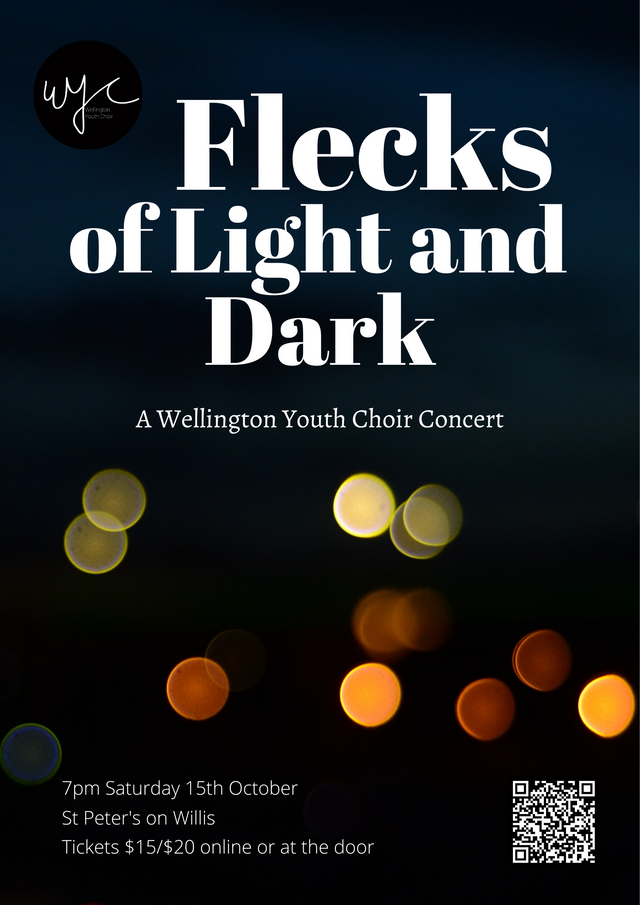
Flecks of Light and Dark Concert
- Wellington Youth Choir
- St Peter’s on Wills | 15th of October | 7pm Missing out on our upcoming tour? Join us in October … More
- Accepted from WYC news by feedreader
- Automatically tagged as:
- singing
-
-
-

WYC On Tour to Whanganui!
- Wellington Youth Choir
- Wellington Youth Choir is going on tour! This year to the wonderful Whanganui. We will be presenting our 2022 concert … More
- Accepted from WYC news by feedreader
- Automatically tagged as:
- singing
-
-
-
Altissime win Silver at Big Sing Finale
- Samuel Marsden Collegiate School
- Altissime win Silver at the Big Sing Finale Marsden's premier choir, Altissime, had a memorable experience singing at the Big Sing Finale in Christchurch, and winning a Silver Award. They were one of 24 choirs chosen to perform from regional competitions held throughout the country. Following two days of performances at the Christchurch Town Hall, the event concluded with the Gala Performance on Saturday night.
- Accepted from Marsden news by feedreader
- Tagged as:
- singing
Samuel Marsden Collegiate School, Marsden Avenue, Karori, Wellington, Wellington City, Wellington, 6012, New Zealand (OpenStreetMap)
-
-
-
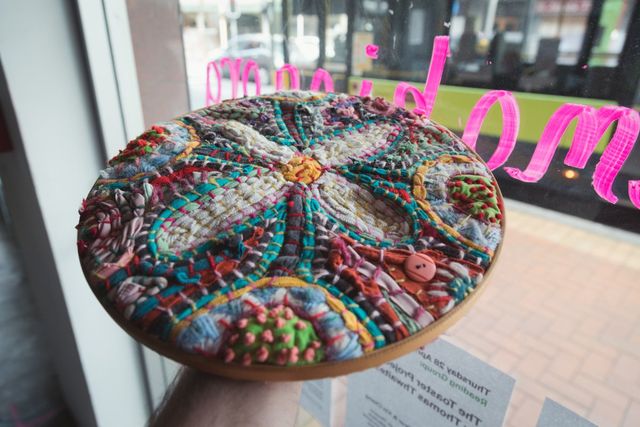
Making the World by Stella Peg Carruthers
- Urban Dream Brokerage
- <figure class=" sqs-block-image-figure intrinsic " > A Place for Local Making - Xin Cheng & Adam Ben-Dror | Image - Markuza Maric More than only fixing things, the Urban Dream Brokerage facilitated makerspace and online platform ‘A Place for Local Making’ took making to the next level of resourcefulness. Artists Xin Cheng and Adam Ben-Dror (with support from Grace Ryder) recently ran the pop-up focusing on creative remaking in central Wellington. Taking pre-loved materials as the basis for creative exploration, Xin and Adam forged local connections within the fields of waste-minimization. Equally, by hosting convivial events which opened up questions around the right to repair and the role of the designer in contemporary society, they fostered an alternative view towards cultures of making and living together. Through re-visioning the acts of designing, making, using and remaking, it was not only objects being re-created but also notions of community. Informed by Free University principles, resourceful makerspaces such as ‘A Place for Local Making’ meet the issue of waste head on in an egalitarian manner. Applying local practices to address global issues, resourceful makerspaces can be platforms for genuine community connection. This re-making of waste materials within a community context felt particularly pertinent in Wellington – a city recovering from a violent protest, with the cloud of Covid-19 still hanging low. Through coming together to fix and transform broken things and waste materials, people engaged with their material surrounds in new ways. Repair and remaking together can also regenerate community cohesion. <figure class=" sqs-block-image-figure intrinsic " > Creative Mending Circle coordinator & writer - Stella Carruthers | Image - Markuza Maric With a background in community education, textile crafts and a passion for sustainability, I joined ‘A Place for Local Making’ as a co-facilitator for the workshop ‘Creative Mending Circle’ in April. Influenced by strong ecological ideals and my own low-waste lifestyle, I was attracted by the resourceful use of waste applied in a community setting. To fix rather than throw out is a philosophy that serves both people and the planet. It is one I personally adhere to. It is also at the heart of Xin and Adam’s creative practices where they consider conviviality, sustainability, and ways of living in a waste-conscious way. As Adam said, ‘Sometimes it is hard to connect the act of gathering and working with these “waste” materials with global societal changes that have to happen in order for us to come into more harmony with the rest of life. They just seem so small. Xin pointed out to me though that these practices add to the diversity, that the world is a richer place because someone is practicing this kind of thing. It opens possibilities for other ways of living and adds up to something greater than the sum of its parts.’ As artists, Xin and Adam have been growing this idea of opening new possibilities through sharing the process of re-making. <figure class=" sqs-block-image-figure intrinsic " > Creative Mending Circle at A Place For Local Making | Image - Markuza Maric De-stabilising traditional hierarchies through re-making practices can democratise creativity. In the mending workshop I co-facilitated with Xin, we supported everyday people in giving new lives to clothing. Snaps on a shirt were both strengthened and adorned with brightly-coloured stitches. Meanwhile, children’s clothing and hard-wearing socks were patched to extend their useful lives. Taking an egalitarian approach to making, anyone could learn to add to and alter their world through making and remaking. As we face the challenges of the 21st century: the effects of the Anthropocene and the climate crisis, the COVID pandemic, a myriad of issues around waste... What is the role of the artist and the designer today? What kind of creative practices could there be, with locality and community at the centre? Xin and Adam approached their position as artists and designers by taking on a facilitator role. Whether it is running a practical workshop or hosting a reading group, both artists work with materials and ideas. More than ‘Think Globally, Act Locally’ – their approach is about thinking locally as well. <figure class=" sqs-block-image-figure intrinsic " > Frugal Electronics Workshop | Image: Markuza Maric Through amplifying and sharing innovative ways of (re)making at A Place for Local Making, fellow human beings were supported in designing to meet their own needs. This approach is based on Ezio Manzini’s ideas of diffuse design: people revisioning reality in a manner meaningful to their own context. The principles of small, local, open, connected help communities reimagine new ways of providing for their needs and community life. Adam and Xin talk about sharing resourcefulness, re-making and repair as ways of changing the culture of living. By taking the time to fix things at hand, doing so through working with our hands, and learning from each other, we are envisioning the possibilities for a different kind of collective future. In this future, social connections are made through non-hierarchical skill-sharing, across generational and demographic diversity. In the mending workshop I co-hosted, participants ranged from the elderly to early twenties. I enjoyed seeing a middle-aged mother showing a young man how to hem a shirt. Next to them, a younger woman helped thread a needle for an older lady. These exchanges are beautiful examples of people approaching repair as both life-enhancing and pleasurable. More powerfully, they are also moments where everyday people practice new (and ancient) skills for an uncertain future. Local skills and resources are utilised in the broadest sense, both in accessibility and value. <figure class=" sqs-block-image-figure intrinsic " > Frugal Electronics Workshop - Curator Grace Ryder & Artist Adam Ben-Dror | Image Markuza Maric Value and the associated idea of abundance are central to the discussions of making and social innovation at ‘A Place for Local Making’. Cherishing small acts of making, re-making and caring can reshape our mental models which give rise to values in life. ‘Time’s gone by so quickly!’ I overheard one participant say. ‘This mending thing, it’s slow… but it’s fun!’ Here, time became valued once again–not only for the results of the work done, but also for the creative enjoyment and the human connections which grew from time spent together. As a creative adventure, mending and (re)making is as much about the process as the end result. In their time at ‘A Place for Local Making’, Xin and Adam facilitated process-based creativity. They asked questions around waste and wants, value and needs, and they did so through reaching out rather than drawing in. Instead of making artworks to display on a wall, they supported community creativity through researching local waste streams and stories of remaking, gathering reclaimed materials for communal use and facilitating public events. Through the workshops and numerous examples of local (re)making documented on the online platform, we can see that with the toolkit of resourceful making and thinking, we can reconsider how we relate with our material surroundings. A product or object may be repaired to fulfil its original designed purpose, or adapted to new, future lives. To consider what happens to an object when it eventually leaves a person’s hands gives new meaning to the word resourcefulness. Here, as we learned at ‘A Place for Local Making,’ it can be fruitful to think of materiality in terms of what a thing is made of, how it is made and remade, who is doing the caring and remaking, as well as what it could become within a constantly changing, living world. <figure class=" sqs-block-image-figure intrinsic " > Contributors links Writer - Stella Carruthers Project - A Place For Local Making Artists - Xin Cheng + Adam Ben-Dror Photographer - Markuza Maric
- Accepted from Urban Dream Brokerage Blog by feedreader
- Tagged as:
- covid-19
-
-
-
Ngā Korimako
- Wellington Girls' College
- Congratulations to Nicky (Ms Sutherland), Michael and the WC Music team. Our combined choir, Ngā korimako, has been selected for …
- Accepted from WGC HTTP by feedreader
- Tagged as:
- singing
Wellington Girls' College, Pipitea Street, Pipitea, Wellington, Wellington City, Wellington, 6011, New Zealand (OpenStreetMap)
-
-
-
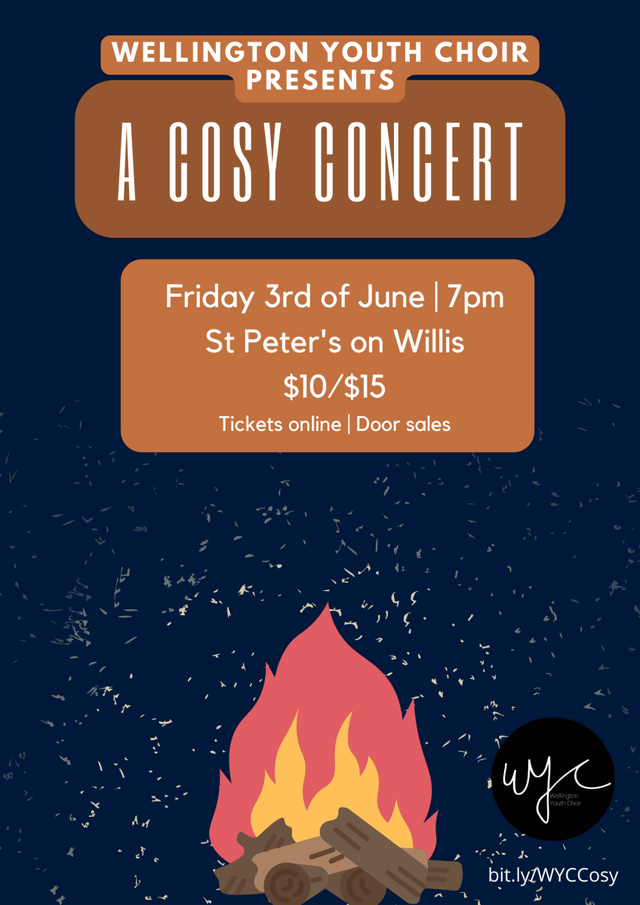
A Cosy Concert
- Wellington Youth Choir
- St Peters on Willis | 3rd of June | 7pm Join Wellington Youth Choir for our mid-year concert directed by … More
- Accepted from WYC news by feedreader
- Automatically tagged as:
- singing
-
-
-

A Place for Local Making
- Urban Dream Brokerage
- A Place for Local Making is a co-creative hub for open-source making, where artists Xin Cheng (Tāmaki Makaurau Auckland) and Adam Ben-Dror (Te Awakairangi Lower Hutt) will welcome anyone to join them in an exploration of resourcefulness. Aiming to inspire imaginative and caring ways of making and living, A Place for Local Making invites inquisitive collaborators to bring in surplus materials and electronics, and to play, make and think with the materials, transforming them into useful or enjoyable things. Wishing to celebrate the local community of maker-carer-user-hackers, they also welcome anyone who makes, repairs and repurposes to share and showcase their invaluable creations.
- Submitted by tonytw1
- Automatically tagged as:
- art
- singing
Courtenay Central (Abandoned), Courage Lane, Te Aro, Wellington, Wellington City, Wellington, 6011, New Zealand (OpenStreetMap)
-
-
-

Auditions 2022
- Wellington Youth Choir
- Kia Ora and Happy New Year! Wellington Youth Choir welcomes you to 2022! Wellington Youth Choir is made up of … More
- Accepted from WYC news by feedreader
- Automatically tagged as:
- singing
-
-
-
An update from Wellington City Chorus: February 2022
- Wellington City Chorus
- We haven’t been posting much lately, so thought it was time for an update! Due to the worsening Covid situation, we have decided not to rehearse in person for the ...
- Accepted from Wellington City Chorus News by tonytw1
- Tagged as:
- covid-19
-
-
-

Commonspace - Live laugh love the alert levels
- Urban Dream Brokerage
- Commonspace is a ‘living room’ for the city, located at 113 Taranaki St until October 31st… so what happens when the room is closed in a nationwide lockdown? Courtney Rose Brown followed up her original writing about Commonspace asking Mouthfull (Ollie, Jack, Sarah and Racquel) about emerging from the lockdown.
- Accepted from Urban Dream Brokerage Blog by tonytw1
- Automatically tagged as:
- art
- singing
-
-
-
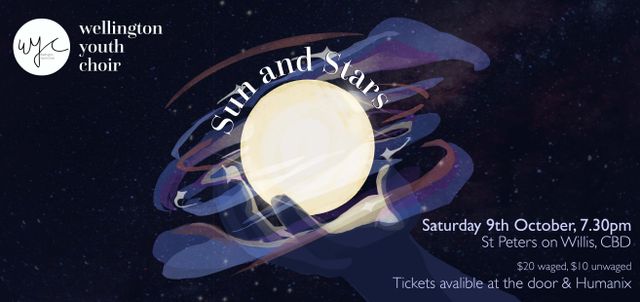
Sun and Stars Concert
- Wellington Youth Choir
- Wellington Youth Choir presents: SUN AND STARS 9th of October | 7:30pm | St. Peters on Willis, Wellington211 Willis St, … More
- Accepted from WYC news by feedreader
- Automatically tagged as:
- singing
-
-
-
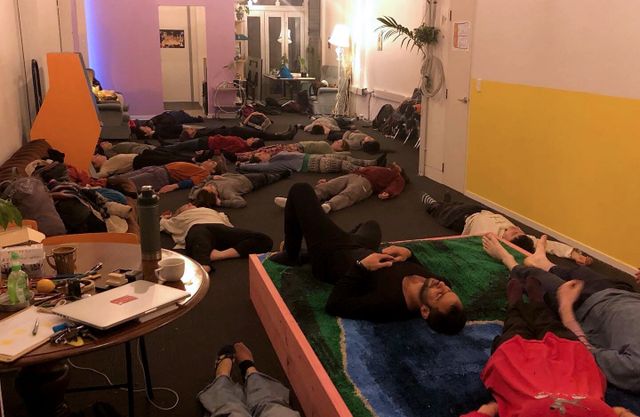
Commonspace - Who is this Mouthfull?
- Urban Dream Brokerage
- Urban Dream Brokerage is proud to have our second commissioned project open - Commonspace by Mouthfull Collective - with further support from Wellington City Council and Creative NZ.
- Accepted from Urban Dream Brokerage Blog by tonytw1
- Automatically tagged as:
- art
- singing
-
-
-
The Warbler Black Friday 13 August 2021
- Wellington City Chorus
- Remaining PVI opportunities; Friends and Family event; convention gets real Future dates to note 15 and 21 August: PVI sessions 16 August rehearsal: deadline for choreo riser passes 22 ...
- Accepted from Wellington City Chorus News by tonytw1
- Automatically tagged as:
- singing
-
-
-
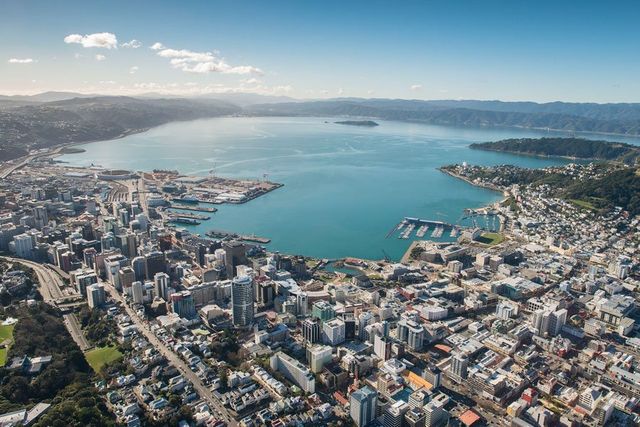
Next generation commissions announced for wellington city
- Urban Dream Brokerage
- Five public art commissions for vacant city spaces funded by Wellington City Council’s City Recovery Fund have been announced by public art organisation Letting Space and vacant space brokers Urban Dream Brokerage.
- Accepted from Urban Dream Brokerage Blog by tonytw1
- Automatically tagged as:
- art
- singing
-
-
-

WYC Presents: A Work in Progress Concert
- Wellington Youth Choir
- Wellington Youth Choir presents their first concert of 2021! A Work In Progress is a casual concert showcasing the choir’s work throughout the first part of the year.
- Accepted from WYC news by feedreader
- Automatically tagged as:
- singing
-
-
-
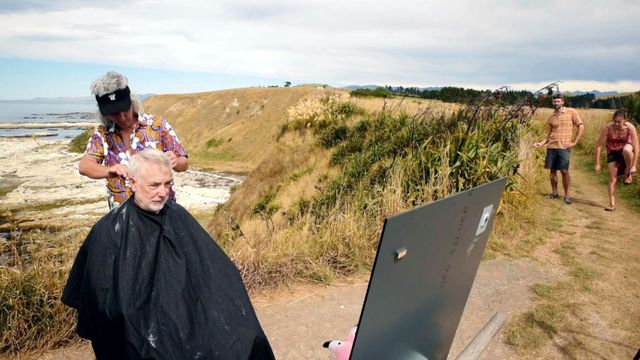
A Cut Above: Pip Adam gives Jason Muir a haircut
- Urban Dream Brokerage
- Two artists, two hairdressers and two friends: writer Pip Adam gives new Urban Dream Brokerage manager Jason Muir a haircut, teasing out in conversation the relationship between Muir’s new property brokering work and the hairdressing business.
- Accepted from Urban Dream Brokerage Blog by tonytw1
- Automatically tagged as:
- art
- singing
-
-
-
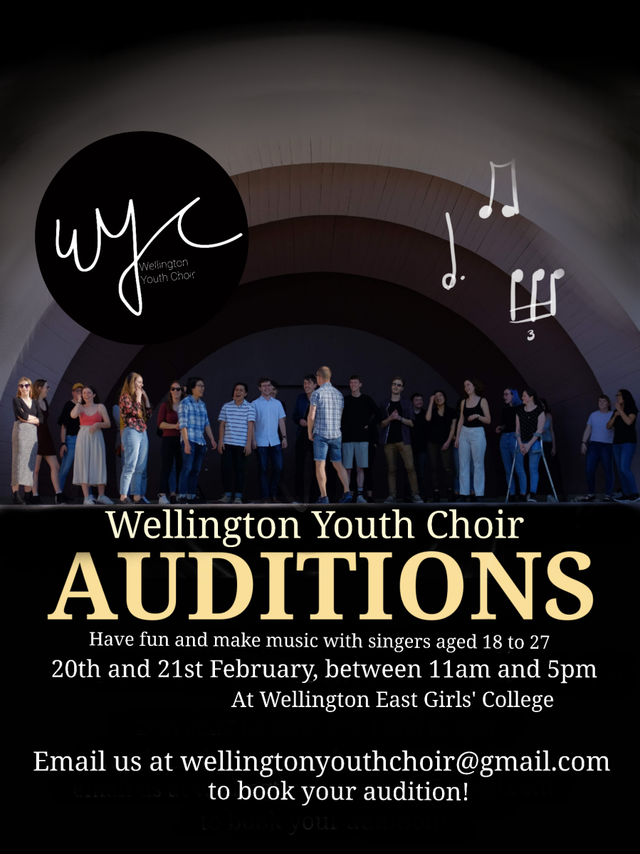
2021 Auditions
- Wellington Youth Choir
- Kia Ora and Happy New Year! Wellington Youth Choir welcomes you to 2021! Wellington Youth Choir is made up of around 50 young professionals and university students aged 18 to 27 years old.
- Accepted from WYC news by feedreader
- Automatically tagged as:
- singing
-
- More...
Related sites
-
-
Bach Choir of Wellington
- The Bach Choir exists to explore and honour in performance the beauties and wonder of choral music from the past four centuries with particular emphasis on the music of J.S. Bach and his contemporaries.
- Tagged as:
- singing
- wcn-hosted
-
-
-
Festival Singers of Wellington
- Festival Singers: a Wellington, New Zealand community choir
- Tagged as:
- singing
- wcn-hosted
-
-
-
Hutt Valley Singers
- The Hutt Valley Singers are a community choir based in Upper Hutt with members from around the Hutt Valley Region.
- Submitted by tonytw1
- Tagged as:
- hutt-valley
- singing
-
-
-
Major Minors Children's Choir
- Based in Upper Hutt, we work with kids aged 4-18 who love singing. There are no auditions and our singers don’t need to be able to read music to join. We sing a wide variety of music including selections from movies, musicals, Disney, jazz, pop and classical songs suitable for kids’ voices.
- Submitted by tonytw1
- Tagged as:
- singing
- upper-hutt
-
-
-
Nota Bene
- Nota Bene is Wellington’s most versatile chamber choir, with a reputation for innovative programming and high performance standards. Under the musical directorship of Maaike Christie-Beekman, the ensemble performs a wide range of choral music, from classical through to contemporary art music and jazz.
- Tagged as:
- wcn-hosted
- music
- events
- singing
-
-
-
Panda
- Home of the soul acoustic artist Panda. Taking bookings in the Wellington area for weddings, private functions. Check out the website for more details.
- Tagged as:
- wellington
- singing
- art
-
-
-
Urban Dream Brokerage
- We are incredibly excited to have relaunched Urban Dream Brokerage Wellington. UDB had previously assisted and brokered space for over 100 creative projects in Te Whanganui-e-tara and wider Aotearoa from 2013-2018. The programme has encouraged the innovative use of vacant and underutilised retail and public space to creatively build community.
- Submitted by tonytw1
- Tagged as:
- art
- singing
-
-
-
Wellington Choral Scene
- This site is maintained by the Wellington Region of the New Zealand Choral Federation as a service to members. Choirs are encouraged to send a link to their home page or, a description of their choir and contact details.
- Tagged as:
- singing
-
-
-
Wellington City Chorus
- Wellington City Chorus is a chapter of Sweet Adelines International. This non-profit organisation is dedicated to teaching, learning and singing four-part harmony, barbershop style, through performances and teaching, perpetuating and creating a love for this style of A Cappella singing in our community
- Tagged as:
- singing
-
-
-
Wellington City Chorus
- Come sing with us! Wellington City Chorus is a women's barbershop chorus that sings unaccompanied four-part harmonies. You don't have to be able to read music - you just have to be able to sing in tune! Visit our website for details on joining.
- Tagged as:
- music
- thorndon
- singing
- wcn-hosted
-
-
-
Wellington Male Voice Choir
- Wellington Male Voice Choir Home Page
- Tagged as:
- singing
- wcn-hosted
-
-
-
Wellington Youth Choir
- The Wellington Youth Choir is an auditioned group of singers aged 18-25, based in Wellington, New Zealand. The choir is made up predominantly of university students and young professionals, and rehearse once a week on a Tuesday evening. They are a capable group that performs regularly during the academic year, in and around the Wellington region.
- Submitted by wellynews
- Tagged as:
- singing
-
Singing Feeds
-
-
Wellington City Chorus News
- Wellington City Chorus
- Latest Item: 9 Feb 2022
- Last Read: 8 minutes ago
- Submitted by tonytw1
- Automatically tagged as:
- singing
-
-
-
Urban Dream Brokerage Blog
- Urban Dream Brokerage
- Latest Item: 16 Feb 2023
- Last Read: 8 minutes ago
- Submitted by tonytw1
- Automatically tagged as:
- art
- singing
-
-
-
Festival Singers of Wellington feed
- Festival Singers of Wellington
- Latest Item: 20 Dec 2020
- Last Read: 8 minutes ago
- Submitted by tonytw1
- Automatically tagged as:
- singing
- wcn-hosted
-
-
-
WYC news
- Wellington Youth Choir
- Latest Item: 8 Feb 2024
- Last Read: 8 minutes ago
- Submitted by wellynews
- Automatically tagged as:
- singing
-
Singing watchlist
Pages which publish singing related newsitems.
-
-
Urban Dream Brokerage Wellington projects
- Urban Dream Brokerage
- Last Changed: 5 days ago
- Submitted by tonytw1
- Automatically tagged as:
- art
- singing
-
